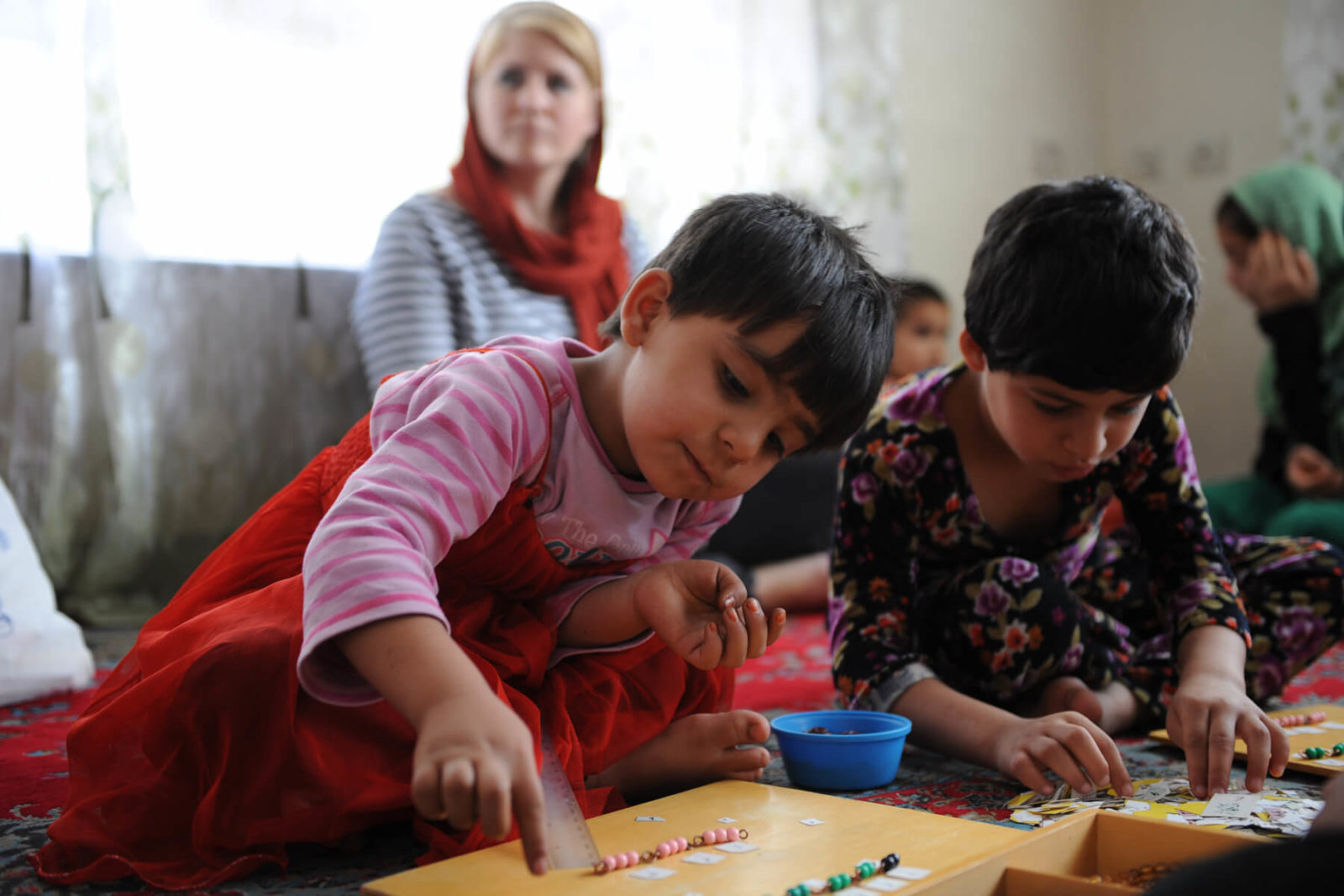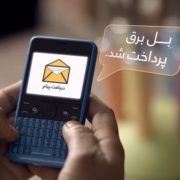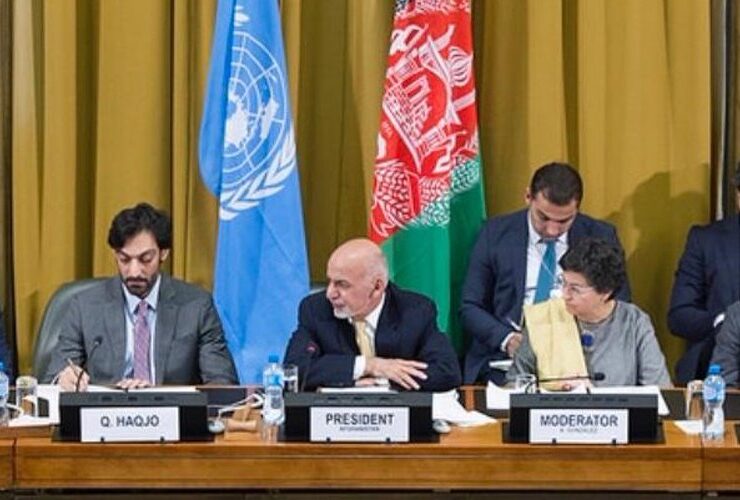Technology catalyzed media, entertainment, and commerce…
It’s Time For Education
HAVING WORKED FOR MANY YEARS IN the aid and development sector, I have seen my fair share of grant application rejection letters. Yet the one that still stands out for me the most was when a donor wrote that our ICT project for education was commendable, but because it was in a war zone it did not fit the donor’s remit or promoting free access to technologies. One learns to take these rejections in stride, but this one was particularly galling because it seemed so obvious that the places in the world that would most benefit from freer access to technologies are the least secure and stable parts, where the free flow of information is hampered.
In Afghanistan, the problem that technology can solve is the need for a shortcut to knowledge resources. In communities without libraries, for instance, a person can now access a library from their mobile phone. A student teacher with only an outdated print textbook online published within the last year. A teacher wondering how to engage students in an intellectually challenging lesson previously had her peers at her school to turn to for advice. Now she can enhance this by searching collections of open educational resources (OER) created by teachers with similar challenges all over the world. Suddenly, all of this valuable information is available to people, where ever the are: the information travels to them rather than them having to travel to the information. This is very useful for people in places that have limited mobility, high conflict, gender based barriers, etc.
Fortunately, Afghanistan has the technological infrastructure that is the prerequisite to even begin thinking about technology – mediated means of increasing access to information. When I first came to Afghanistan, in late 2003, I used a satellite phone that had cost USD$12,000, to send emails at the hefty cost of USD$7 per minute. Today, mobile phone ownership in Afghanistan is ubiquitous thanks to the forward thinking telecommunication companies like AWCC and Roshan that entered the market early on, recognizing that both economic growth and the freer flow of information would need a modern and reliable communications network. By 2017, more than 80% of the population owned a cell phone and of those there were a reported 2 million 3G subscribers. Besides feature phones, smart phones are also increasingly common.
These trends mean more people are able to access the internet. And the changes in access to the internet have been similarly astounding. There are now over 50 active ISPs operating in Afghanistan, making for a healthily competitive market. This growth is enabled by a supportive policy environment from the government side. It’s also led to a burgeoning startup industry, fueled by the enabling infrastructure. Kabul, Herat, Mazar-e-Sharif and other cities all host communities of companies whose very existence relies on the internet. And it’s now common to find computer labs full of students doing their research online on the campuses of Afghanistan’s main public and private universities.
Besides greater personal and institutional access to the internet, social media access rose by nearly 20% in the course of a single year, between 2016 and 2017, according to a study by Hootsuite and We are Social, and sits at around 9% penetration as of 2017. Afghans’ use of the internet has started to shape civic discourse, political mobilizing, and activism i.e. hashtag campaigns like #whereismyname, #AfghanistanNeedsYou and #9to10, making the digital world a site of both information production and consumption. Pop culture and traditional arts have also flourished in the cyber arena as musicians and artists have found a platform on sites like Youtube. In the same vein, part of the much-touted proliferation and diversification to the internet. Afghan journalists share news and images with the world through Twitter, newspapers like 8am reach a much larger audience through their online news platform and social media feeds, and Afghan bloggers are manifold, providing independent views and connecting with Afghanistan’s large diaspora too.

Indeed, today there are many young Afghan urbanizes who can hardly imaging living without ability to quickly check Googly from their smartphone when they need information on, well, anything. Yet all of this dramatic change – while worthy of celebration – should be put into perspective, by stepping back and looking at the country as a whole. Of the 11.6% of Afghans who say they access information from the internet (according to the 2017 Survey of the Afghan People), the large number is highly concentrated in urban areas. Despite heightened internal migration, including a trend of people moving to cities, Afghanistan remains a predominantly rural country: UNESCO estimates that 74% of Afghans live in rural areas.
So, while the technological infrastructure is there, the reality is that 3 our of 4 Afghans live in an area where their access is not comparable to an urban area. A case in point is the situation of Afghan teacher colleges. While city universities often have well equipped and connected computer labs, Afghanistan’s public teacher colleges do not. The teacher colleges are tasked with preparing the country’s teaching force. In the 1395 school year (2016/2017), teacher colleges graduated 23,195 students, many of whom will feed into the 200,000 strong teacher work force, who are responsible for the learning of Afghanistan’s children – arguably the country’s most valuable asset. IF there is anywhere that the potential of technology should be harnessed toward, it should be this.
Fortunately, there are entry points where we can start to do something about this inequitable access to the great promise of technology. In 2017, Roshan partnered with the Wikimedia Foundation so that Afghans could access Wikipedia for free on their phones. The organization Rumie distributed tablets with educational content in Afghan schools. Numerous education institutions in Afghanistan use distance learning, connecting Afghan students with teachers and mentors all over the world, using video technology. My own confidence in the potential of technology for improving education in Afghanistan has been through the experience of siting up DDL Lite, the offline version of the Darakh-e Danesh digital library of open educational resources (OER) in 13 Afghan teacher colleges to date, in the computer labs provided by the Ministry of Education. We made use of this infrastructure to make the library available through local area networks (LANs) in these labs. Four of those colleges also now have full internet connections that we set up, covering the service costs for a year, after which point the Ministry of Education has agreed to take over the costs. The other colleges running DDL Lite can also occasionally connect to the internet with a 3G-enabled phone and sync the library. This way, teachers in training at rural colleges can make use of up to date digital learning resources, enhancing their subject knowledge and their exposure to a wide array of pedagogical tools they can eventually deploy in the classroom when they start teaching, thereby better serving their young charges.
DDL Lite is an ideal solution in this situation, albeit a temporary one. Our aim is to connect all of the colleges to the internet so that Afghanistan’s future teachers can benefit just as much as students at modern campuses of big universities in cities do. But at least for now, the building blocks are there: basic technological infrastructure that leaves things open for possibility. We have seen the powerful impact of technology on Afghanistan’s commercial, media and entertainment sectors. Now, it’s time to explore how technology can be exploited more fully for a similarly powerful impact on the education sector, and on the young minds who will inherit the Afghanistan of tomorrow.
“Day to day, it seems like change comes slow to Afghanistan. But year to year, the view is different. When I think back to my arrival in Afghanistan 15 years ago, it’s possible to see just how remarkable the change over this relatively short period has actually been. My hope is that in another 15 years, I will look back on education system and marvel at how far things have come, and hopefully, it will in part be thanks to technology.”
– Lauryn Oates
To contribute to our efforts to connect more teacher colleges in Afghanistan to the internet, please donate at www.cw4wafghan.ca/support/donate-today and learn more at www.darakhtdanesh.org.








